Nagano Winter Olympics '98
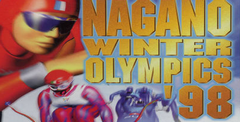
| a game by | Konami |
| Genre: | Sports |
| Platforms: |
|
| Editor Rating: | 6/10, based on 11 reviews |
| User Rating: | 7.0/10 - 2 votes |
| Rate this game: | |
| See also: | Olympic Games |
Konami transforms its popular Track & Field series into a winter wonderland of snow-filled fim and cool multiplayer action with Nagano Winter Olympics '98. The game's not without its flaws, but if you'd rather play the Olympics than watch them on TV, then Nagano should satisfy all you wannabe athletes suffering from commercial-induced gold fever.
Going for Gold
Nagano storms the N64 with Olympic and Championship modes and 12 challenging events from downhill skiing to curling. The game tracks all the medals you've won, your best times and performances, and even how you rank against your friends in each event.
While those features are cool, it's what's missing from the game that melts away some of Nagano's fun. Both a Practice mode and a variable skill setting were carelessly left out. So if you suck at certain events, you not only can't practice them, but you can't even make your computer opponents any easier to beat. And if you're too good at Nagano, your only competition comes from the fun multiplayer games.
Although controlling your athlete in certain events like speed skating and the giant slalom takes more skill than the constant button bashing of Track & Field, some events like the snowboard halfpipe are just too passive. All you do is strike a series of button combos, then watch as your snowboarder performs a trick. Boo.
Speed Kills
Nagano's graphics race by at faster speeds than the PlayStation version's, while the game's realistic moving characters fly to glory in ski jumping and crash into last place in the bobsled. Some noticeable breakup and draw-in problems exist, but they're not as bad as on the PlayStation.
The audio is a mixed bag of slush and hush. Skiers slice down slopes to the realistic sounds of wind and crushed snow, but the sparse announcer and mediocre music fail to capture the Olympic spirit.
Olympic Champion
If you're trying to choose between the PlayStation and N64 versions, Nagano for the N64 is definitely the better buy. It's a fun multiplayer game that will have you and your friends laughing about who choked and who won the gold long after the '98 Olympics are over.
ProTips:
- Remember to reserve some energy when skating around the track. Watch your stamina bar closely so you have enough left for a final push to glory.
- The keys to winning the bobsled and luge are to have a fast start and to ride the slope of the walls to gain more speed.
- Performing more difficult tricks on the halfpipe will score you higher points in the snowboarding competition.
- When speeding downhill in the snowboard slalom, use the edge turn only as a last resort. Using it frequently will slow you down.
- In curling, if your opponent is closer to the circle than you are, use a powerful toss to knock it out of the way.
Download Nagano Winter Olympics '98

System requirements:
- PC compatible
- Operating systems: Windows 10/Windows 8/Windows 7/2000/Vista/WinXP

System requirements:
- PC compatible
- Operating systems: Windows 10/Windows 8/Windows 7/2000/Vista/WinXP
Game Reviews
After raking in the gold medals at the Summer Olympics with the outstanding International Track & Field, Konami's heading into the snow with Nagano Winter Olympics. Supported by the official license of the '98 winter games, Nagano delivers a solid selection of events, including snowboarding, ski jumping, freestyle skiing, downhill skiing, slalom skiing, speed skating, luge, bobsled, and more. Although these screens are surely from the game's cinematics, not gameplay, the in-game graphics will sport 3D polygonal athletes. Other details are still scarce, but if Nagano lives up to its predecessor, it'll certainly be a smash hit.
Slushin" down the slopes just in time for the winter games storms Nagano Winter Olympics '98, a promising title that sports an incredible look and fun gameplay, even at its early stage.
Medal Contender
Nagano's gameplay can best be compared to Konami's Track and Field series. You compete in a series of fun and challenging Winter Olympic events while trying to get the best score and time. The game is best played with a group of friends as the pressure of competition can really get to people.
Graphically, the game's already a winner with detailed competitors and courses. One of the problems in this early version, though, is in the slalom events. The flags aren't colored brightly enough, and you sometimes can't see which way to go until it's too late. But with some minor tuning, Nagano Winter Olympics could be one of this year's biggest gold-medal winners.
Winter Wonderland
Nagano Winter Olympics '98 features 12 events, including alpine skiing downhill, alpine skiing giant slalom, ski jumping 90m, ski jumping 120m, freestyle skiing aerials, snowboard halfpipe, snowboard giant slalom, speed skating 500m, speed skating 1500m, bobsled, luge, and curling. One to four players can go for the gold in Olympic or Championship mode, while the game keeps track of your best performances in each event and records which medals you've received in competition.
Fans of Konami's Track and Field series have a lot to be excited about. Not only do they get a whole new line of cool winter events to play, they get to experience them like never before, thanks to the N64's polygonal punch.
Nagano Winter Olympics '98 features 12 real winter Olympic events: alpine skiing, ski jumping, freestyle skiing, snowboarding, speed skating, four-man bobsled, single luge and curling. While most of the events will be familiar, snowboarding and curling are new this year. Curling is like shuffle board on ice. One person slides a large puck toward a target on the ice while two teammates sweep a path for it to slide. Players have 16 countries to choose from along with two different modes of play. They consist of Olympic, where single events are played for a medal or Championship Mode where players participate in a series of events for a final score.
The same button-tapping technique is used throughout the game only some events, such as speed skating, call for more rhythm than speed. Still others (snowboarding) require quick button combos to complete tricks. Button smashing aside, most of the events (bobsled and giant slalom skiing for example) simply call for the quickest time to win and don't require continuous button pounding. Needless to say, multiplayer is the most entertaining way to play this strenuous game. On the downside (no big deal), there is only one view available per event and the game is not Rumble Pak compatible, which is surprising.
It should be noted that the PlayStation version of this game was done by a different division of Konami Japan and has a few more events as well as a slightly different look to it. Differences noted, sports fans as well as anyone who played any of the Track and Field games of the past should definitely take a look at this game.
Konami's Track and Field series takes on the events of the Winter Olympics in Nagano Winter Olympics '98. There are 13 different events that consist of several variations of skiing, snowboarding, speed skating, bobsled, luge, ski jumping, freestyle skiing and curling make their appearance in the game. Players have 16 countries to choose from as well as varying difficulty levels to select. Applying the classic button crunching gameplay pioneered by the T&F series has taken on a slightly new twist in Nagano Olympics '98. Many of the events only require a few taps to get started and then it becomes a race against the clock using only the directional pad and forward momentum. In fact, the only events requiring speed tapping are speed skating and just a smalt portion of the bobsled/luge events.
Being released simultaneously with its N64 counterpart, this version holds up pretty well against its 64-Bit brother. Naturally the 3-D graphics are not as pretty, but most of the animation is good. To its credit, this version has an extra speed skating event, but unfortunately does not have the cool snowboard half-pipe competition present in the Nintendo 64 version.
Different gameplay elements are present in the freestyle ski event. To complete a jump, a long button combo must be completed in a small amount of time just before the skier leaves the ramp. If done quick enough, the trick will be executed properly; if not, your player suffers the agony of defeat. In the N64 version the same principle applies to the snowboard half-pipe competition. It gets downright challenging when you need to hit a 12-button combo in about two seconds. The com-bos get more challenging as the difficulty of the trick goes up.
As with all the Track and Field that enables you to see all four players on the screen at once. The shortage of on-screen multiplayer events is disappointing, but hey, there's nothing wrong with a good curling match against friends. It's just a little more cerebral and a little less frantic. Look for a full review on Konami's Olympic hopeful in the March issue off.
After its resounding success with International Track & Field, Konami turns to the winter games with the less-dazzling Nagano Winter Olympics '98. Some across-the-board shortcomings crop up, but Nagano puts on a generally good show, especially as a multiplayer game.
Olympic Fever
The games begin with a selection of 13 events, including snowboarding, speed skating, ski jumping, bobsled, and even curling. While many events (like downhill skiing) are a blast, some are just boring (like freestyle aerials). But the severely limited save feature and the absence of a practice mode rank as even bigger problems.
As for gameplay, the heart of Nagano is battling it out with a few buds--the one-player action doesn't have the staying power to hold your interest. The effective controls require the usual button-mashing frenzy of track & field games, as well as some timing-based meters like those found in golf games. The problem is that the controls are often very removed from the action, so you'll sit and watch the show, tapping the controller at only a few key moments. Yawn.
Visually, Nagano delivers well-animated polygonal athletes and eye-catching tracks, but the game's speed isn't as quick as it should be, and a disturbing amount of breakup and draw-in problems interfere. The dull sounds and repetitive announcer fall flat, too.
Silver Medal
If you have both a PlayStation and an N64, definitely stick with the N64 version of Nagano--it's faster and looks better. But PlayStation Olympians won't go wrong with a weekend rental of Nagano.
ProTips:
- To maintain speed when skiing or snowboarding, always use the Edge button when turning. Also, line up turns so that you have a straightaway until your next turn--then you can tuck into a crouch and go faster.
- Take turns on the luge and bobsled by slicking tight in the crease between the floor and the wall--bouncing around only slows you down.
- For max distance on the ski jump, stop the two meters evenly just a hair above the red lines.
People say:
I figured if anyone could create a great Winter Olympics game, it'd be Konami--who, after all, brought us the 8-Bit Classic Track &. Field and its fun PlayStation update. I was wrong. Most of NWO '98's 12 difficult events are neither fun nor exciting, and much of the blame falls on the uninspired control setups. Only a few events--namely bobsledding and speed skating--demand any timing, while controls for the rest are oversimplified. I suppose part of the problem is that Konami tried to make this game more realistic, since it carries the official Nagano Winter Olympics license. Sure, the venues may mirror their real-world counterparts in Nagano, japan, but that means we're denied the thrill of, say, an insanely speedy alpine slalom down a super steep mountain. Don't expect any multiplayer innovations, either. Up to four players can compete, but not simultaneously, forcing everyone to take turns (imagine how cool it would have been to play a four-player bobsled event, in which everyone tries to lean into the turns at the same time). On the plus side, the game has decent graphics and plenty of events. But c'mon-does anyone really want to compete in Curling (sort of an Olympic version of shuffleboard)? I would have preferred fewer events, as long as they were done right.
The improved 3-D graphics and shorter load times in the N64 version of Nagano make it a little more palatable than the PS one. It also helps that analog control is standard on the N64. Don't overestimate these improvements, however--the game still lacks in key areas. The worst offender is the slow gameplay that drains the excitement out of most of the events. The few fun ones aren't good enough to save Nagano from mediocrity.
First things first: Konami can do much better. When of games like Nagano, I think of real, technical Olympic events that are translated into fun, playable gaming versions. Well, the events may be based on the Olympics, but they sure aren't fun. The main thing that makes them that way is the control--it just doesn't feel right. On top of this, the animation of the characters is poor, and the graphics need more refining.
In the areas of diversity and uniqueness, Nagano scores well with plenty of events to keep you busy. The only problem here is that Nagano is only moderately fun to play and gets boring fast. The graphics are below-average for the N64 with serious clipping problems and generic textures everywhere. If you love winter games, then maybe Nagano would be your cup of tea. For me, Nagano should have been so much more.
Hurrah! This is more like it! Finally the publishers have got their proverbial bottoms into gear and managed to successfully bring out a scheduled N64 title, not only on time, but early! Is this the shape of things to come? Sadly, probably not. Nagano Winter Olympics has been rushed out to coincide with... erm, the Nagano Winter Olympics, currently taking place right this moment in Japan.
Of course, if you're reading this review after the Olympics have finished, then that last statement will be totally incorrect. What we need now is for the Official... um... 1998 Zelda World Championships to be held and then the game that everyone's waiting for will be rushed out to coincide with it. Anyway, enough waffling, and on with the review.
Nagano Winter Olympics is, unsurprisingly, a sports game based on the Winter Olympics... in Nagano. With no fewer than 12 individual events, there's certainly a lot packed into this title, hence the quite substantial cart size.
It's Snow Joke!
Events on offer range from the death-defying downhill skiing, through the backbreaking single luge, to the breathtaking... er, curling. This last event is one of those activities where you find yourself asking quite how it ever got classed as a sport - it's sooo boring. I happened to catch curling on Eurosport last night - it came on suddenly, and before I knew what had happened I was too bored to get up and switch it over. Having sat through a whole six minutes of the event, the time it took me to conquer lethargy and crawl to the channel select, I can safely say that the real event is far more boring than the version in the game. Er, which is good.
The events in the game seem to vary from quite cleverly implemented and therefore good fun, to not quite so cleverly implemented - the Freestyle Skiing Aerials event, for instance - and thus not quite so much fun. Admittedly, certain events don't really lend themselves to complicated game-play. Real speed skaters, for example, have to focus on building up a rhythm and not falling over, and -apart from the felling over - this is what you have to do, by tapping the L and R buttons to build up your skater's rhythm.
The aforementioned Freestyle Skiing Aerials, on the other hand, is obviously an event which involves many different factors and a lot of skill, and yet in the NWO version of it, all you have to do is hit A repeatedly and then tap B to land. It would've been nice to be able to control the tricks a bit more -presumably this was considered a bit difficult for N64 gamers to handle on their own. Duh, we so dumb.
Over-Simplified, Perhaps?
Events vary in difficulty and complexity, although they're never allowed to get too complicated. Any event which involves more than simply steering or tapping one or two buttons really fast has a kind of 'permanent tutorial running through it The bobsleigh, for example, involves accelerating the bobsleigh down the run and then loading your team-members in one by one. Rather than having to rely on your own judgement in loading, the game itself tells you when to tap the appropriate button by giving you a flashing green cursor. Still, at least with the bobsleigh you'll be glad of this, since the rest of the event is flipping difficult, even though all it involves is steering!
I have to say I've never really been a fen of sports sim games on consoles, for two reasons. One is that nothing can ever replace the absolutely superb Daley Thompson's Decathlon that I used to have bn the Spectrum er, have you seen it on an emulator recently? - Ed). The second reason is because I always feel that when you reduce a complicated sports event, which many people strive for years to master, to the action of repeatedly slapping one or two buttons and/or tapping a few other buttons in sequence, it takes something away from the event. But then. I've never really understood the idea of golf videogames either.
As far as it goes, Nagano Winter Olympics is a good attempt at a multievent sports sim with some events which are good fun, and some that aren't. The fact that you can play with up to four players (though not simultaneously; unfortunately) and hammer your mates will drastically extend its play life, while at the same time comparably reducing the life of your control pads.
I can safely say though, that Nagano Winter Olympics is, beyond a shadow of a doubt, the best Winter Olympics game out on the N64 at the moment.
Mixed bag of events from the 1998 Olympics. Ultimately, the bad or average events outweigh the good, so it's a bit of a snow job.
A long time ago, Konami set the arcade world alight with their classic Track & Field coin-op, which reduced Olympic events to mad button hammering and made them all the more interesting for it. After that, all sorts of people leapt aboard the bandwagon, the best known being Epyx with their Summer and Winter Games series.
However, such things have been out of fashion for a few years, so Konami are trying to recapture the old spirit with a multi-event Olympic extravaganza based around the snowy goings-on in Nagano, Japan. How does the 64-bit version compare in terms of gameplay to the machines of old? Can the Olympic spirit be recaptured on a home machine? And does anyone want to play curling? All these questions will be answered as 64 Magazine looks at each event in turn.
Alpine Skiing: Downhill
The Downhill event is skiing at its most basic and exhilarating; it's just a matter of getting from the top of a hill to the bottom as quickly as possible. There are a few flags that have to be negotiated en route, but for the most part it's simply you against the clock.
Nagano Winter Olympics's rendering of the Downhill event is no slacker in terms of speed. It's not blindingly fast by any means, but the steeper parts of the track give you enough of a boost to give an impression, however briefly, of the kind of rush real skiers must get shortly before they barrel into a tree.
Unfortunately, Downhill suffers from a surprisingly poor control method. The analogue stick is used to guide your skier, as you'd expect. What isn't expected is how limited his response is. There is very little graduation of turn speed as you move the stick from side to side - either he turns, or he doesn't. You might as well be using the d-pad! The only way to increase your rate of turn is to use A for 'edging', but this slows you down enormously.
What is a real pain in Downhill is that there's no apparent way to increase your speed. Although you'd think the analogue stick could be used to make your skier crouch to lower wind resistance and increase speed, you're limited to simple left and right movements. If you lose speed for any reason, there's no way of making it back up.
As a result, Downhill is very frustrating, because no matter how hard you try, it seems all but impossible to match the times set by the computer. Even after plenty of practice, I never managed to finish less than four seconds behind the leader, well out of the running for a medal.
Alpine Skiing: Giant Slalom
The Giant Slalom is a tougher form of downhill skiing - the flags, which were a fairly minor part of the event in Downhill, are now critical to success. You have to weave between each pair, which requires you to make some extremely tight turns. Just getting down the whole course without missing a flag and being disqualified is a major achievement!
Because the Giant Slalom has exactly the same controls as the Downhill event, the same problems apply. If anything, they're even worse, because the slalom course is totally dependent on precise control of your skier, which you just can't get with the control method used here. The only way to get anything even vaguely near the computer's times is to clip the flags as you descend in order to keep your turns as small as possible, but a fraction of a millimetre too far over and you'll hit the poles and spend several seconds waving your arms around like a windmill at a rave. Because you're looking at the course from behind your skier, it's rather hard to judge just how close you are...
K=90 Individual
Or ski-jumping, to you and me, the event that enabled Eddie 'The Eagle' Edwards to make Great Britain an international laughingstock. K=90 takes place on a 90 metre ski jump (or it could be the angle of the slope itself - who am I, David Vine?), and the aim of the game is to hurtle down the slope, fly into the air and not wind up in a pile of crunched bones when you hit the unforgiving ground a hundred metres away.
K=90 is one of the trickier events, the first stumbling block being how you get down the slope without falling flat on your arse. Experimentation revealed that the analogue stick had to be kept pushed down if the skier was to reach the skies. Further experimentation revealed that the stick had to be slammed forward just as he reached the lip of the slope if he was to travel more than three feet!
Once in the air, the skier has to maintain his balance and compensate for the wind, which is achieved by careful, delicate movements of the analogue stick. A gauge at the side of the screen shows the jumper's current attitude -if it starts flashing red a wipeout is imminent, so hurried adjustments are needed! )ust before landing, a quick stab of the A button puts the skier's feet into landing position. Do this too soon and he'll be unable to maintain his balance, but too late and his knees will end up somewhere behind his ears.
Although it's one of the more complicated events, K=90 is actually quite good fun once you get the hang of it. My main complaint is that it seems a little too random. Even when you think your timing is exactly the same as a previous successful jump, you can end up landing anything up to 50 metres back, or even wiping out altogether. Still, nobody ever said that ski-jumping was easy!
K=120 Individual
A lot like K=90, only with a longer ramp. The extra 30 metres of descent means that jumps are longer and higher, and also a lot harder to complete successfully! As if the timing on the K=90 event wasn't critical enough, here you have to be absolutely dead-on if you want to have any hope of matching the massive leaps from the computer controlled contestants. The extra time spent in the air means that the wind affects you more, so staying upright is even more of a challenge.
Apart from that, K=120 is much the same as its shorter brother, so it gets the same medal.
Freestyle Skiing: Aerials
Now this is weird. The sport itself is odd enough - launch yourself off a ramp and tumble around in mid-air in the hopes of impressing the judges with your bravado and derring-do -but the way it's been implemented is even odder!
Since the event involves you flipping your skier on all axes, you'd think this was an ideal time to make use of Nintendo's analogue stick, right? Apparently not. Instead, you choose the stunt you want to perform before you jump, then once the skier sets off you just hammer away at the A button to build up a power gauge. The more power you have, the more impressive your skier's gyrations. Once you've hopefully wowed the judges, it's time to hit B to land.
This is the nearest Nagano Winter Olympics gets to Konami's arcade classic Track & Field, and it's about the least appropriate use you can think of. A sport of skill and precision, and all you do is bash a controller button? Take a hike!
Snowboard: Halfpipe
Remember the ancient electronic game Simon, where everyone sat around a thing the size of a pizza and had to press coloured buttons in the right order? Well, it's back!
The bizarre thing is that it's back in the shape of the Halfpipe event in Nagano Winter Olympics. Snowboarders, who pride themselves on being so cool they don't need to show anyone just how cool they are (they just let their nuke-proof sunglasses do it for them) are not going to be pleased that their beloved poseathon has been reduced to the level of an early Eighties toy from MB Games!
Before your snowboarder starts his run, you select a series of eight stunts for him ýto perform. There are 22 in all, starting with the 'basic air' and going all the way up to the dizzy heights of the '3D crippler double hand grab'. Isn't that Vinnie Jones's speciality? Once you set off, all you have to do is key in the right sequence of button pushes and stick twiddles in the few seconds before your boarder reaches the top of the pipe, and the deed is done. Repeat until bored (no pun intended).
If you stick to the easier stunts you'll never score enough points to get a medal, but the flashier tricks require impossibly rapid sequences of button bashing and stick swirling. If anyone could move their hands that fast, they'd never leave the house! Also, however well you do, the American judges never seem to award you any points!
There is a certain amount of skill in getting the moves right, but since you're not actually controlling your boarder at all it seems a bit pointless, really.
Snowboard: Giant Slalom
This is a variation of the skiing slalom, which is made even harder by having to pass flags on the right side. You go to the left of red flags and the right of blue - they are helpfully arrow-shaped to remind you, but it's still a tough task to get down the slope without disqualification.
The control method is, if anything, even slacker than the skiing. The boarder sticks his arse out and waves his arms around at the slightest touch of the stick, but actually getting him to turn is even harder than getting a real snowboarder to admit that his coat is repulsive. As with the skiing, there's no way to pick up lost speed, and if you clip a flag sometimes you'll carry on as if nothing happened, whereas other times you're sent sprawling - but you can never predict which.
Things do pick up the more you practice; once you're used to the supertanker-like rate of turning you can get down the course within a few seconds of the leaders. However, you'll probably get too frustrated by the whole thing to keep trying to beat them.
Speed Skating 500m
Can you think of a famous speed skater? Me neither. In this event, your lycra-clad speedster skates round an ice rink. At speed. That's it.
The controls are similarly simple, with only the two shoulder buttons being used. Each button is used to control one of the skater's legs, and the key to success is building up a steady rhythm that builds up speed quickly without tiring the skater out. A stamina gauge is located under a power bar - if this runs out, your poor knackered skater just glides along helplessly, wheezing like a beagle after 3,000 fags.
It's a lot easier to play the game if you don't look at the skater at all. The power bar has a pointer which flips from side to side, showing how much force each leg is putting in. Timing is all; fall out of rhythm and the skater will start tripping over his feet, try to move too fast and he won't be able to put enough power in.
Speed Skating is an event that requires total concentration. The only problem is that it's also a bit boring, because you end up with your eyes riveted on a tiny arrow moving left and right rather than watching what the skater's doing!
Speed Skating 1500m
Pretty much identical to the 500m event, only three times longer. The main difference this makes to the gameplay is that you have to pace yourself with a lot more discipline. Try to race away at the start, and you'll have no energy left for the closing stages of the race. Oddly enough it's actually easier to win, because you can cruise for sections of the race to regain stamina, but apart from that it plays just like its shorter predecessor.
Bobsleigh: Four Man
There must be an English-speaking joker at Konami, because the other competitors in this event include a B Viss, an E Eagle, a Russian called Glasnost and even an N Tufnel. Wasn't he in Spinal Tap?
But I digress. The Bobsleigh is one of the most difficult events in the whole game - just managing to reach the finish is an event in itself!
To start the race, you need to hammer the A button to build up speed, all the while keeping a close watch on the indicator that flashes to tell you when each of your sleighers needs to hop aboard. Once they're all in, the only thing you need to worry about is doing a John Noakes and using your face as an emergency brake.
Assuming you manage to get all four blokes in without any of them stumbling, you're already moving at a fair lick by the time you reach the first checkpoint, and after this the combination of forward momentum, a near-frictionless surface and gravity send you rocketing down the twisting course like a, erm, bobsleigh. The analogue stick is theoretically used to steer, but the best you can hope for in reality is adjusting your course just enough to stop you flipping over on the lips of the banked curves. This is a very hard trade-off - if you play it safe and stay near the base of the curves you don't gain any speed, but go an inch too high and the bob will roll over, sending your team home with their heads tilted back at 180° to normal.
The Bobsleigh is one of Nagano's best events, as even when you're familiar with the track it can still catch you out. Great fun!
Luge: Single
What kind of madman rides a luge? It's like going the wrong way down the M1 on a motorised biscuit tin, except you can't even reach in for a Bourbon.
The course is the same as the bobsleigh run, although you start from an elevated hut, using the L and R buttons to build up speed as you push off. That aside, it's really just a harder version of the bob event. The light weight of the luge and its single rider means it's even harder to control on the curves, making it an even more taxing event. Maybe a bit too taxing, as watching your man bounce screaming down the icy course for the umpteenth time can get a bit annoying.
Curling
Er... yeah. Is this really what people want to see in their thrilling winter sports game?
Actually, yes. It might not produce quite the same adrenaline rush as the bobsleigh, but it's the event in the game that requires the most skill - and you get to compete head-to-head with other nations, something the other events are lacking.
Curling is essentially bowling on ice - there's a large target painted on the ground at the far end of the lane, and your aim is to get one of your bowly handle things (curls, I suppose) as near as possible to the central ring. You can choose either to play for accuracy or, if your opponent seems better than you, you can play dirty and knock his curls away from the point-scoring zone by hitting them with your own. It's marbles for grown-ups!
Although it sounds perilously close to crown green bowling, played by dull old men with pipes and flat hats, curling is one of the high points of Nagano simply because you can play it against other people rather than faceless computer opponents. It might not be Goldeneye, but there is still an evil satisfaction in sabotaging a friend's bullseye shot by just sending a rocket of a shot right down the middle of the lane and knocking his curl into eternity!
So all in all, do Konami take home the gongs? Nagano Winter Olympics is rather a mixed bag. It's got some very good events (the bobsleigh and, curiously, the curling) and a couple of duffers (the aerial skiing event is especially poor). Luckily, the good and the not-great-but-playable events outweigh those which aren't up to par. The graphics aren't bad, with a few high points like the reflections on the ice events, and though sporting events don't offer much in the way of amazing sound even in real life, what there is creates a good atmosphere.
If you want a winter sports game that isn't just snowboarding, Nagano is a fairly good bet. It might not be able to match up to the dedicated snowboarding games on their own pistes, but its variety helps compensate. If you want to avoid the annoyance of having to work out how to play each event, though, it's definitely worth hanging on for an English version.
Luge, bobsleigh, halfpipe, curling, they're all here and they're all supremely boring. Still, of you're having trouble sleeping...


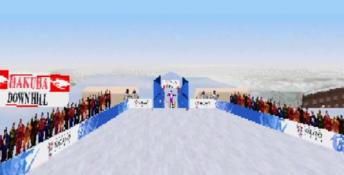

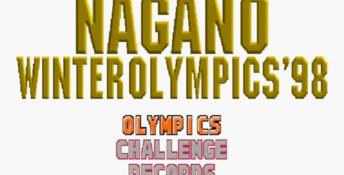

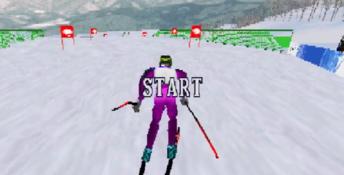

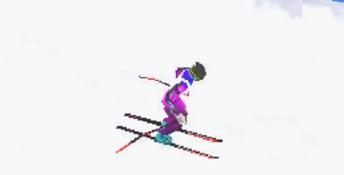

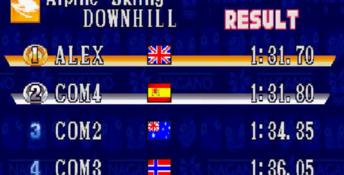








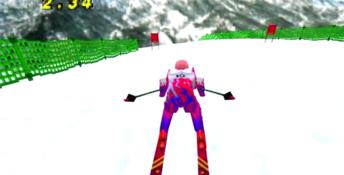


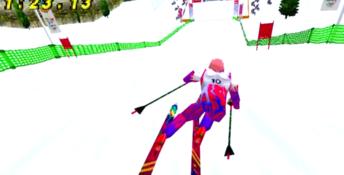

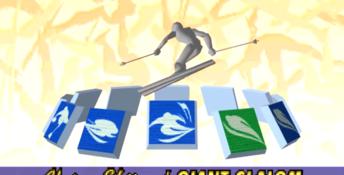


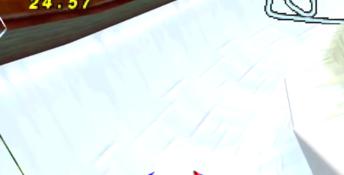




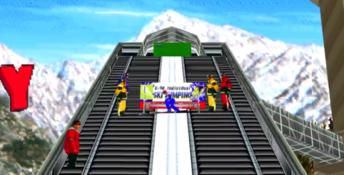

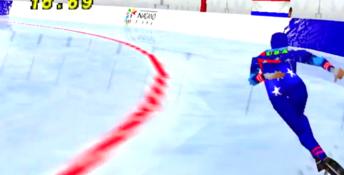
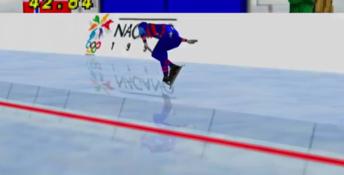
 Olympic Gold: Barcelona 92
Olympic Gold: Barcelona 92
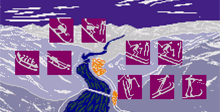 Olympic Winter Games - Lillehammer 94
Olympic Winter Games - Lillehammer 94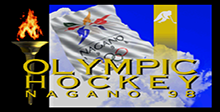 Olympic Hockey Nagano '98
Olympic Hockey Nagano '98 ESPN International Winter Sports 2002
ESPN International Winter Sports 2002
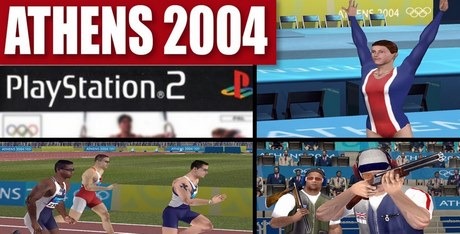 Athens 2004
Athens 2004